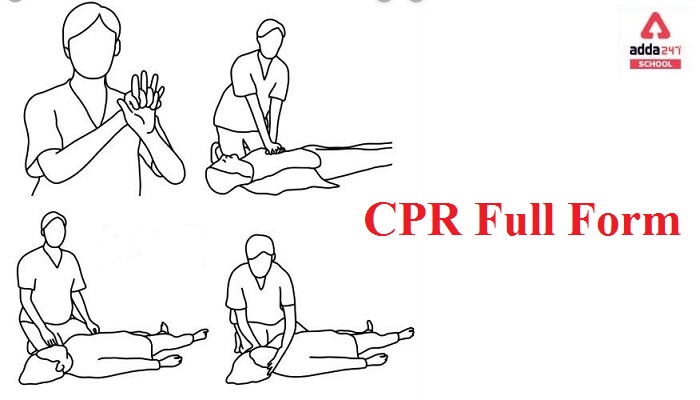CPR Full Form- Cardio Pulmonary Resuscitation
Cardio-Pulmonary Resuscitation is the full name for the abbreviation CPR. Cardio refers to the heart, whereas Pulmonary refers to the lungs, Resuscitation means “to revive.” CPR is frequently seen as a lifesaving method in emergency conditions such as heart attack or cardiac arrest. A heart problem, asphyxia, drowning, electrical shock, and other factors can all lead to cardiac arrest. CPR entails a combination of mouth-to-mouth breathing and chest compression.
Read About ATM
CPR Ka Full Form: CPR Full Form in Hindi
कार्डियो-पल्मोनरी रिससिटेशन सीपीआर का पूरा नाम है। कार्डियो दिल को संदर्भित करता है, जबकि पल्मोनरी फेफड़ों को संदर्भित करता है, पुनर्जीवन का अर्थ है “पुनर्जीवित करना।” सीपीआर को अक्सर आपातकालीन स्थितियों जैसे दिल का दौरा या कार्डियक अरेस्ट में जीवन रक्षक विधि के रूप में देखा जाता है। हृदय की समस्या, श्वासावरोध, डूबना, बिजली का झटका, और अन्य कारक सभी कार्डियक अरेस्ट का कारण बन सकते हैं। सीपीआर में मुंह से मुंह से सांस लेने और छाती में संकुचन का संयोजन होता है।
Read About ACP of Police
CPR Full Form in Medical: Situations to carry out CPR
Following are the situations, in which, carrying out CPR can be beneficial for the patient:
- Fainting – When a person is unconscious, first try to bring him to his senses, and if he does not regain consciousness, then check his breathing and pulse.
- Respiratory problems – If a person stops breathing, then CPR needs to be carried out in that situation.
- Sudden fall – If the person suddenly falls, first of all, check the breath and pulse of that person. If that person stops breathing, then in that case CPR needs to be carried out.
- If a person is electrocuted – If a person is suddenly electrocuted, then do not touch him, remove the source of current from around him with the help of wood and keep in mind that current cannot pass through any object. If that person stops breathing, then in that case CPR needs to be carried out.
Read About Laser
Full Form of CPR: Importance
- If blood circulation is interrupted, permanent death or brain harm will occur swiftly. As a result, it is critical to sustaining blood circulation and respiration until medically skilled assistance arrives. To maintain that, CPR is helpful.
- Any trained person can perform CPR, which includes external chest compressions and respiratory rescue.
- CPR, if performed during the first six minutes after a person’s heart stops beating, can keep them alive until medical help arrives.
- CPR is performed until the patient’s heartbeat recovers to normal or the patient is declared dead.
CPR full form: The test procedure
To do CPR, first of all, make the patient lie down at a solid place and check his nose and throat to see if anything is stuck there. There are usually two procedures of CPR, applying pressure to the victim’s chest with your palm and giving artificial respiration through the mouth. Keeping the palm in the centre of the chest, press it while pumping, repeat this process one to two times. By doing this, the victim’s heartbeat will start again, after that while pumping, keep the other hand on top of the first hand and tie it with your fingers, now keep your hand and elbow straight.
If the victim’s heart does not start beating even after pumping, then try to give artificial respiration to the patient along with pumping. Press the chest 1-2 inches with your palm and do this at least 100 times per minute and apply pressure on the chest 30 times and give artificial respiration to the victim twice.









 CBSE Admit Card 2026 for Private & R...
CBSE Admit Card 2026 for Private & R...
 AILET 2026 AIR 1: Check Full Toppers Lis...
AILET 2026 AIR 1: Check Full Toppers Lis...
 AILET Result 2026 OUT, How to Download S...
AILET Result 2026 OUT, How to Download S...














